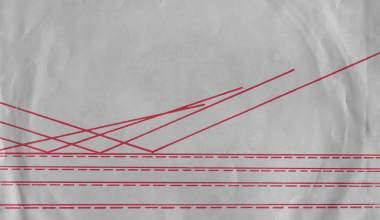Resident archivist Jack Dangers gets his fingers into the circuits of 1970s DIY electronic instrument maker and improviser Michel Waisvisz

Michel Waisvisz was into building his own instruments, so he could make music by touching the circuits and become part of the device himself. “I started seeing my skin as a patchable cable,” he wrote in 2004.
Waisvisz was born in 1949 in the Netherlands. When he was a kid, he and his brother discovered that transistor radios would made weird noises when they opened them up. They’d perform concerts with them at home by fiddling with the circuit boards inside. In the late 1960s, he became friendly with Dutch electronic music pioneer Dick Raaijmakers, one of the co-founders of STEIM (Studio for Electro Instrumental Music) in Amsterdam. Waisvisz was director of STEIM from 1981 until his death in 2008.
In 1978, Waisvisz released an album called ‘Crackle’, which uses the Cracklebox/Crackle Synthesiser. The Cracklebox is a wooden box with touch-sensitive plates. By placing your fingers on the plates, you complete a circuit to make a noise. The album is free improvisation and, at points, sounds like getting your teeth cleaned at the dentist, but it really is musical and very wild.
Waisvisz also used a circuit-bent VCS 3 on this record. He connected the pins of the VCS 3’s patchbay with touchpads in order to play the synth with his fingers, and removed the rear panel so he could mess with the inner circuits using skin-conductivity. It seems the Crackle Synthesiser was a combination of the Cracklebox concept with the VCS 3, but it’s not entirely clear, and the term Crackle Synthesiser seems to refer to the Cracklebox, too.
The track ‘Stradivarius’ was played on a DIY device called the Springboard, which was built by Hugh Davies, another keen instrument maker and founder of the Electronic Music Studios at Goldsmiths, University of London. Davies was a former student of Karlheinz Stockhausen and Daphne Oram, and wrote the ‘International Electronic Music Catalogue’, an essential book for anyone interested in post-war, avant-garde electronic music.
On the back of the ‘Crackle’ sleeve, there’s an image of Waisvisz playing the synth. He was a physical performer, and in the last few years of his life he developed The Energetica Project, where he was trying to generate electricity by his own movements to power the instruments.
His inventions weren’t intended for mass production, but STEIM built and sold 4,000 Crackleboxes in the 1970s, and they still sell them today. You can get a kit for €100, or a built version for €150. A copy of the ‘Crackle’ LP will set you back around £75.





